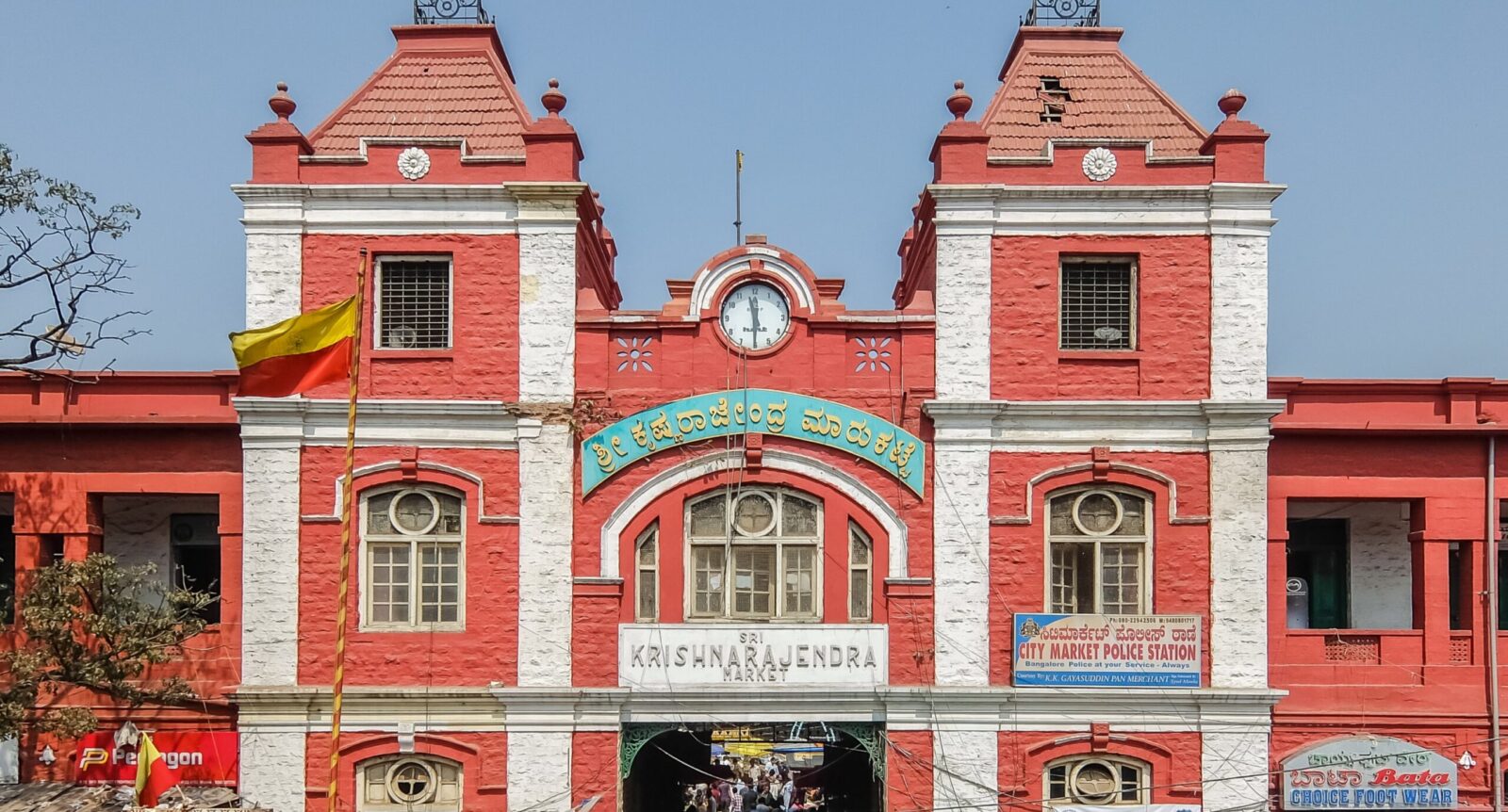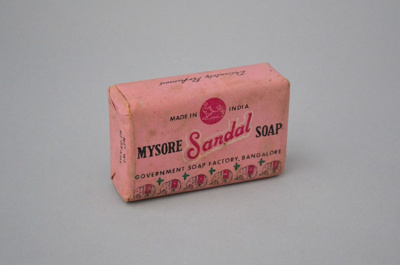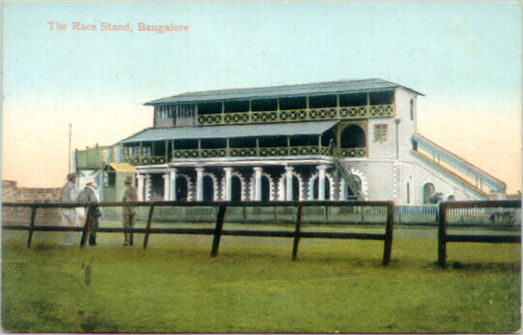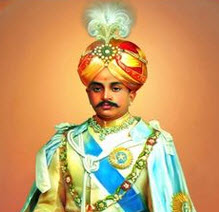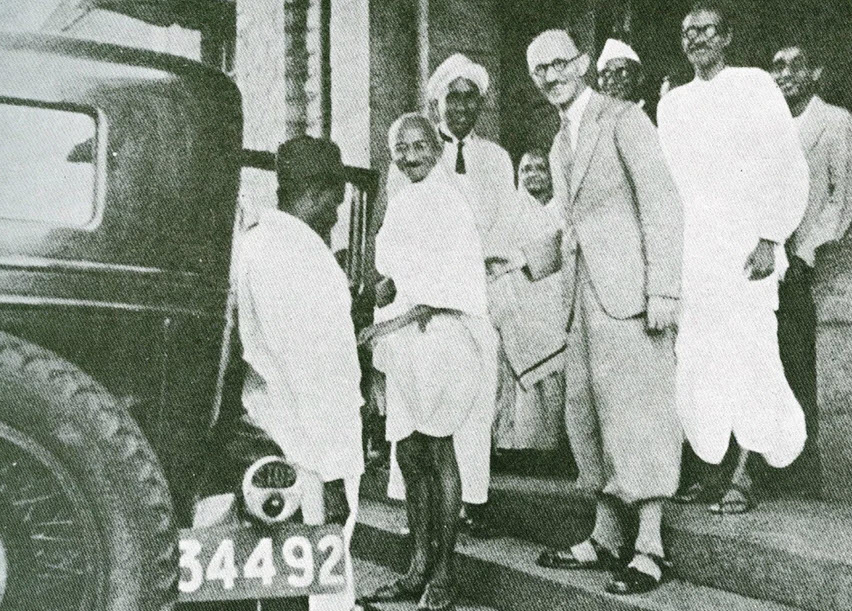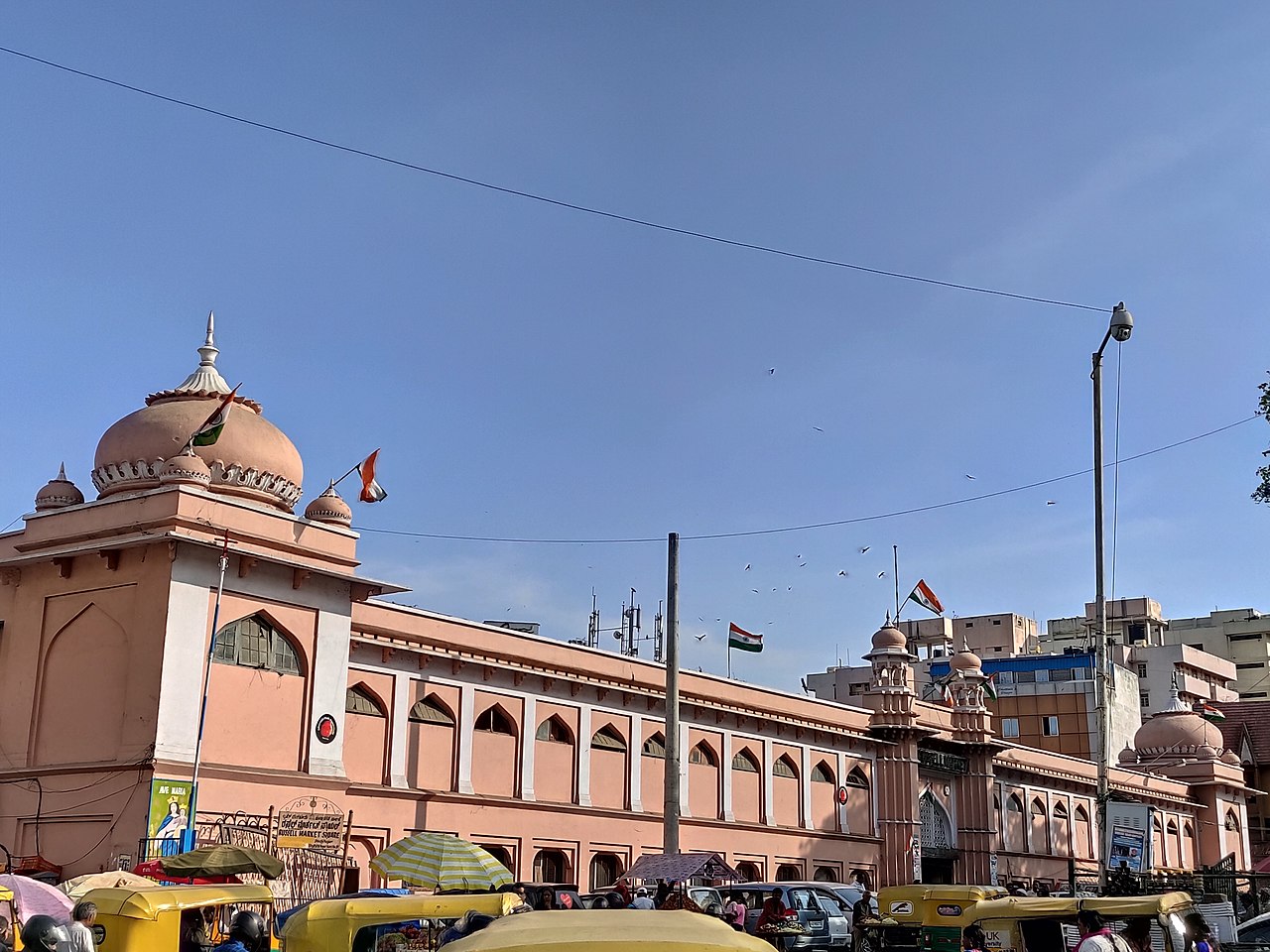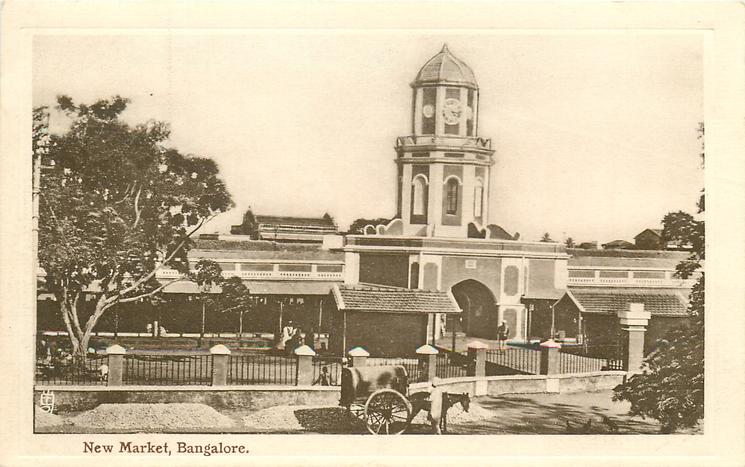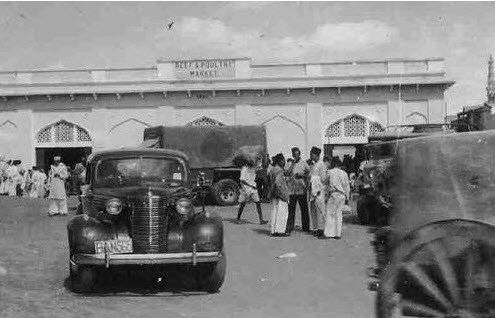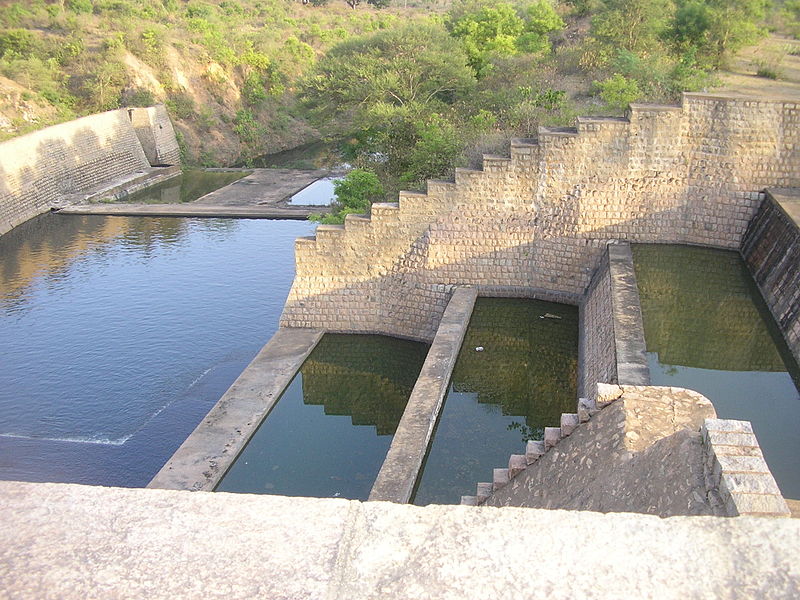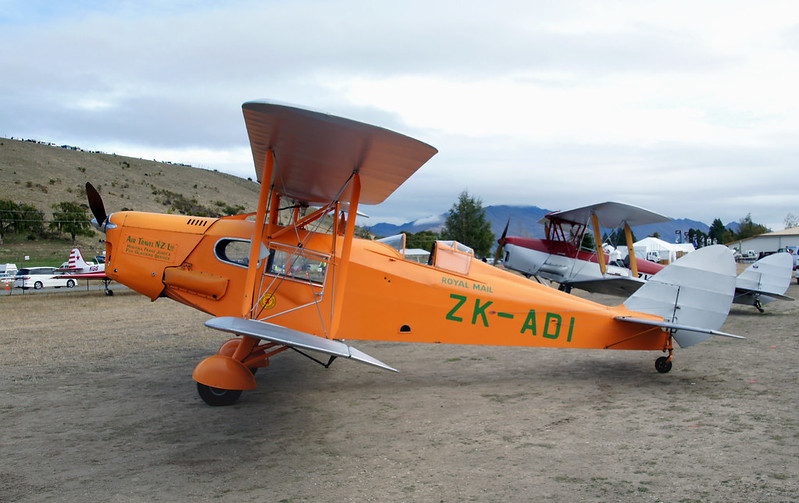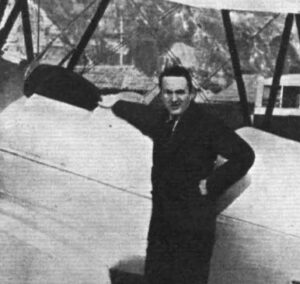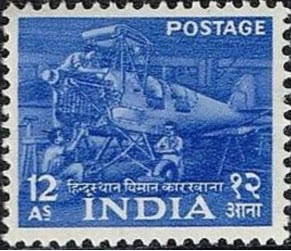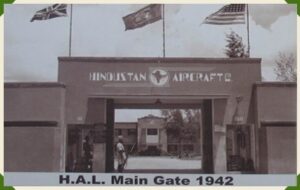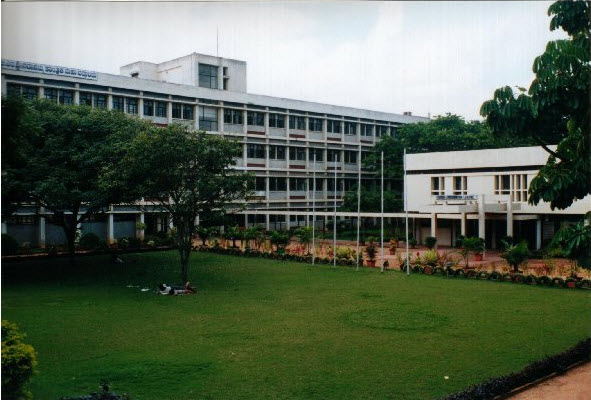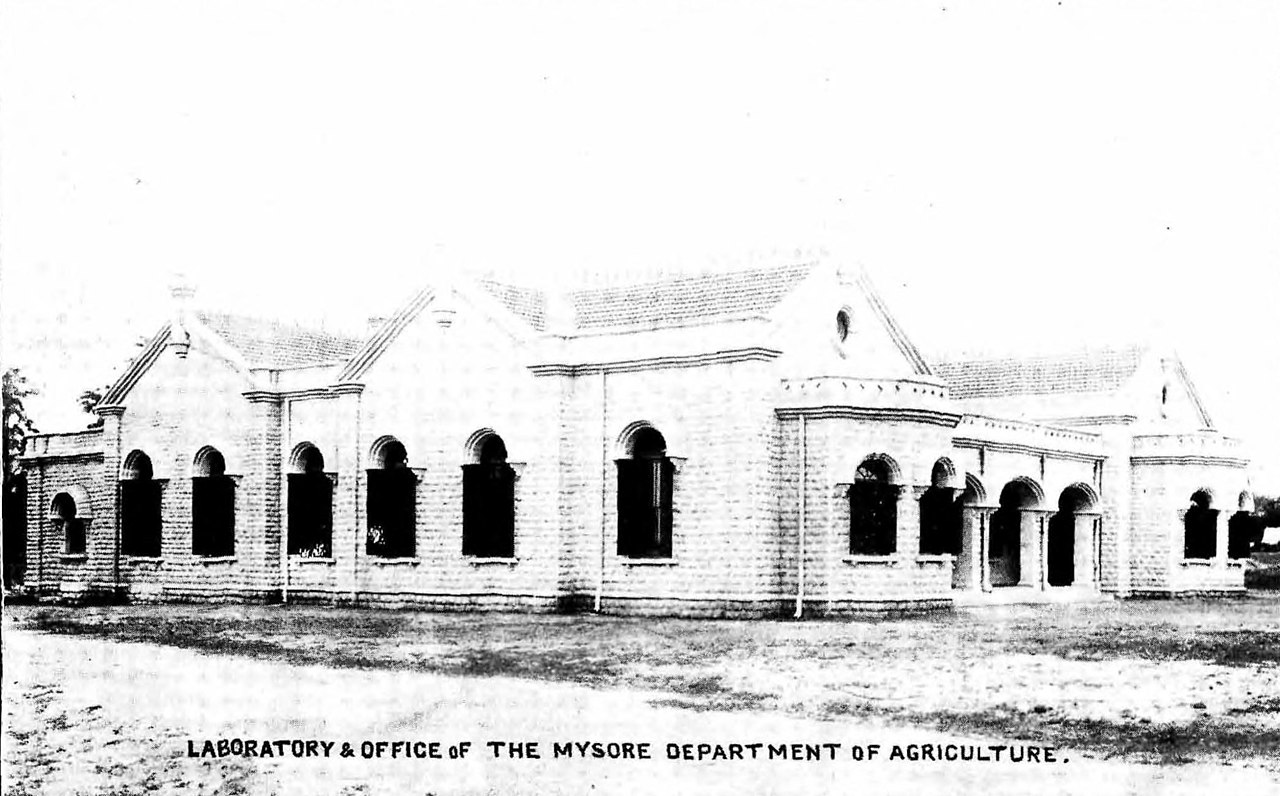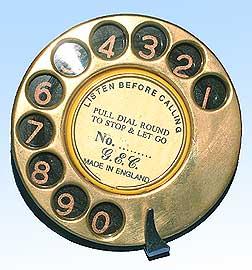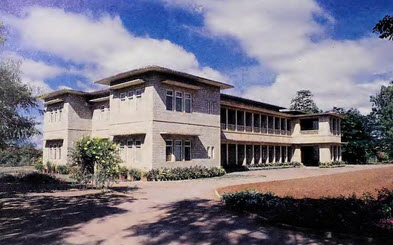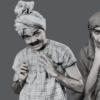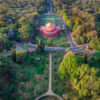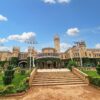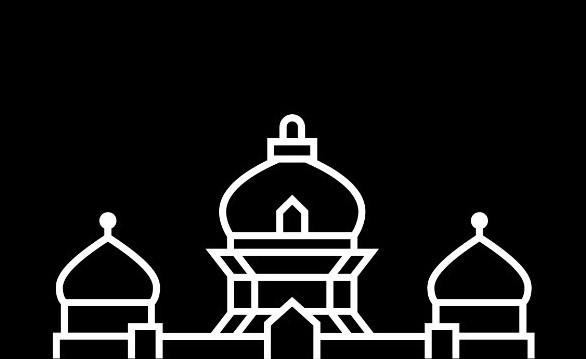Bengaluru through the ages 1910 AD to 1948 AD
We have documented the major events in the history of Bengaluru in this series. While many of you will be familiar with them, we have scoured archived government documents, books and journals to bring out new facts that were not well known. In addition, interesting images embellish the words to provide a complete picture. We hope you enjoy the series.
-
December 1910
Minto Ophthalmic Hospital
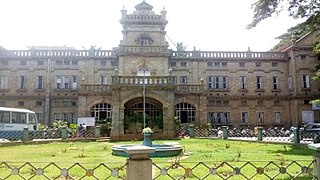
Minto Hospital construction started. It was named after Lord Minto, who was the viceroy of India between 1905 and 1910. It was originally started as a small dispensary in Chamarajpet in 1896. The foundation stone of the hospital building was laid by the Maharajah of Mysore on December 17, 1910 in commemoration of the visit of Earl of Minto. The hospital was completed at a cost of ₹2,82,000 and opened on January 31, 1913 by the Maharajah of Mysore in the current location.
Image: Minto Eye Hospital in Bengaluru
-
July 1912
Imperial Tobacco Company (ITC)
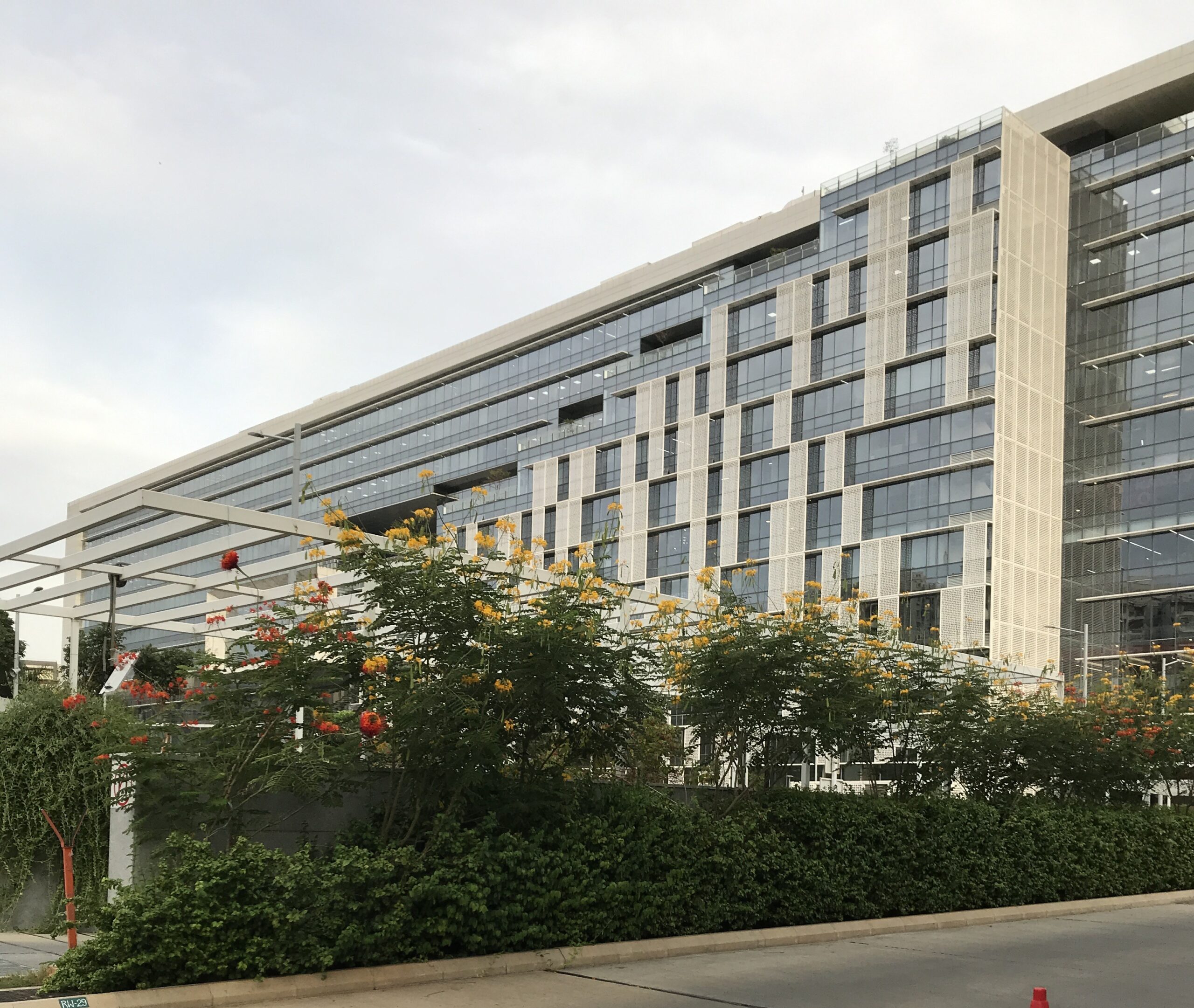
Imperial Tobacco Company (ITC) established by British American Tobacco Company in Fraser Town as their second cigarette manufacturing factory in India after Munger in Bihar. The factory made cigarettes under the ‘Gold Flake’ brand using Virginia tobacco imported from the USA and other countries. Incidentally, the corporate headquarters of Imperial Tobacco Company registered on August 24, 1910 at Kolkata is called Virginia House. The Bengaluru factory was started on July 15, 1912. The factory was built on 37-acre land purchased from civil and military station on the outskirts of the city. Later the name was changed to Indian Tobacco Company in 1970 and is now called ITC Limited as it diversified into other businesses. Today, the old factory has been rebuilt as a Software Technology Park with tech workers replacing factory workers of the past.
Image: ITC Tech Park on the site of the factory
-
August 1912
YMCA
The foundation stone of the City YMCA building was laid in August 1912. The association had facilities for football, cricket, tennis, basketball and volleyball. The building was located to be in easy reach of educational institutions and the Public Offices. It also had a library, indoor games rooms, a hostel for students and an auditorium.
-
October 1913
State Bank of Mysore
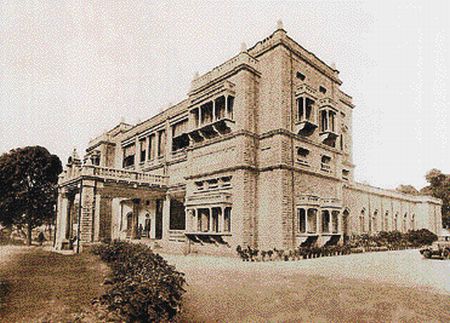
Dewan Visvesvaraya founded Bank of Mysore during a time when the banking sector was in the midst of a crisis. Many banks collapsed in this period due to mismanagement, fraud and other problems. It was said that due to the great courage and statesmanship of the Dewan, the bank flourished. By 1917, it had a subscribed capital of ₹20 lacs ($6,48,870 at the prevailing exchange rate of ₹3.08 per dollar), deposits of over ₹61 lacs and cash turnover of ₹12 cr. Private subscribers invested over ₹4 lacs ($1,35,000 at prevailing exchange rate of ₹3.08 per dollar) before the bank commenced operations. The Government of Mysore committed to maintain a minimum balance of half the paid up capital for 10 years without interest and bear half the working expenses for the first five years. The bank was required to appoint lending officers with Government approval and not lend money against immovable property or deal in foreign exchange. The bank opened for business on October 2, 1913.
Image: The original Bank of Mysore building
-
May 1915
First Kannada Literary Conference
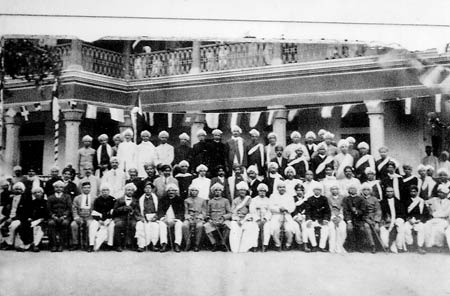
The first Kannada Literary Conference took place between May 3-6, 1915 at the Government Arts and Science College. The conference was held under the auspices of Kannada Sahitya Parishat founded due to efforts of Alur Venkata Rao, DV Gundappa and BM Srikantaiah with the support of Dewan Visvesvaraya. It was presided over by HV Nanjundaiah. Incidentally, the first (1915), second (1916) and the forty seventh (1970) conferences were hosted in Bengaluru.
Image: Participants at the Kannada Literary Conference
-
June 1915
Mysore Economic Conference
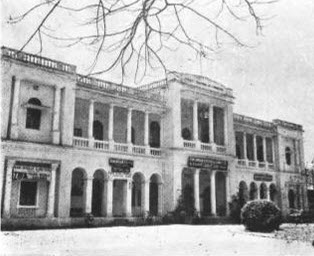
The fifth Mysore Economic Conference was held at Bengaluru on June 26, 1915. Dewan Visvesvaraya founded the Mysore Economic Conference in 1911 with the objective of having a dialogue with public personalities about the development of the state. The conference met once a year to discuss policies, programs and projects. In this conference, Visvesvaraya proposed setting up a Chamber of Commerce for Mysore state. One year later on May 8, 1916, the Chamber was inaugurated in the hall of Government High School with over 500 merchants in attendance.
Image: The Chamber of Commerce building
-
March 1915
United Breweries
United Breweries was founded on March 15, 1915, by Thomas Leishman by merging five existing breweries, some of which he owned in partnership with HV Ivatt and Gangadhara Chetty and Co. He owned about 5 acres of land at the intersection of Sydney (Kasturba) Road and Grant (Vittal Mallya) Road where the United Breweries was established. Today, this is the location of UB City. Along with this, he owned another 12 acres on Langford Road in Richmond Town. This was the location of the malthouses building where cereal grain was converted into malt used for making beer and whiskey. The brewery’s products were sold to the public and also supplied to military officers’ mess and canteens all over the state. About a hundred people were employed in the brewery.
-
July 1916
Mysore University
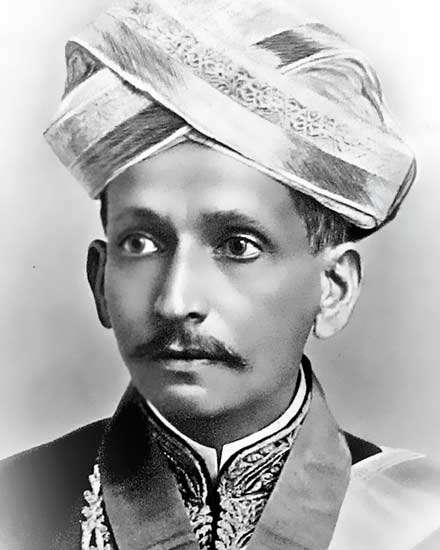
Visvesvaraya as the Dewan strongly pushed for a separate university for the state instead of being part of Madras University. Despite strong opposition, the university was born on July 22, 1916. All colleges in the state such as the Central College in Bengaluru and Maharaja’s College in Mysore became affiliated with Mysore University.
On October 12, 1916 on the memorable occasion when the first meeting of the Senate of the new Mysore University took place, the Maharajah as Chancellor made a speech. The first convocation of the university for conferring degrees was held on October 19, 1918. In the first 10 years until 1925, it awarded 85 Master of Arts, 963 Bachelor of Arts and 197 Bachelor of Science degrees.
Image: Sir M Visvesvaraya in his 30s
-
1917
Government Engineering College (UVCE)
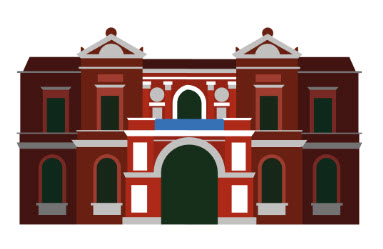
UVCE was started as the Government Engineering College thanks to the pioneering efforts of Dewan Visvesvaraya. Civil and Mechanical Engineering was offered to about 40 students who were enrolled. It was housed in the Mechanical Engineering School. Four years later, workshops and laboratories were established and Electrical Engineering was added in 1925. It was renamed as University Visvesvaraya College of Engineering in 1964.
-
1917
National High School
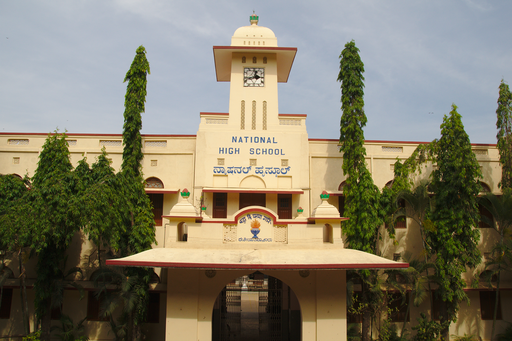
The Theosophists led by Annie Besant start the famous National High School in Basavanagudi. The school started from modest origins and grew through difficulty in the initial years. Sir Mirza Ismail inaugurated the permanent school buildings on December 18, 1926. The buildings were made possible through contributions from merchants, lawyers, officers and others. By this time about 2000 students had enrolled and over 330 had passed the Secondary School Leaving Examination. Students preparing for University Entrance Examination were given tuition through supplementary classes. In 1939, the buildings were expanded with a grant of ₹11,000 from the Government. Over the past 100 years, the school has seen several notable alumni which includes sportsmen, movie stars, politicians and other famous personalities.
Image: National High School Courtesy: Pavithrah
-
February 1918
Government Soap Factory
Subsequent to successful trials of good soap by Indian Institute of Science, the Mysore Government established the Government Soap Factory to develop it on a commercial scale. It started under SG Sastry, Director of Industries who had been trained in the manufacture of soap in England. The factory commenced operations in February 1918. It had modern equipment required for making not just ordinary bar soap but also finest milled toilet soaps. At that time it was said that the Government wanted to turn it over to a private enterprise with adequate resources after its successful establishment. The first soap from this factory was available for sale by November 1918. Soaps made here were exported to Europe and America.
Image: Mysore Sandal Soap from earlier years
-
1919
Minerva Mills
Minerva Mills started to make cotton fabrics. Started by a merchant from Bombay ND Sirur of Sirur and Co, with a capital of ₹30 lakhs, Sirur also owned the Mysore Mills located in the city. It employed about 800 people by 1926. Issues like minimum age for workers, pay and discipline were always controversial. After the mid 1920s, workers frequently went on strike for various reasons, sometimes together with other mill or factory workers.
-
1920
Bengaluru Race Club
Bengaluru Race Club formed in 1920. H Donne was the secretary of the club that was initially administered by Royal Calcutta Turf Club until 1953. During World War II the Turf Club made efforts to raise funds, and in 1941, the first day of the seven-day season, was named War Fund Day. In 1962, the name was changed to Bengaluru Turf Club and became an independent club from 1966.
Image: A view of the old race course
-
1927
Silver Jubilee of Maharajah's Rule
Silver Jubilee celebrations of Maharajah Nalvadi Krishna Rajendra Wodeyar’s rule were held all over the state. In Bengaluru. SJ (Silver Jubilee) Polytechnic and SJ (Silver Jubilee) Park were established to commemorate the event. There were special processions in which the Maharajah and other important functionaries rode on decorated elephants.
Many grand circles (roundabouts) were constructed at important intersections. Some of them were designed by Gustav Hermann Krumbiegel, who was perhaps the most famous superintendent of Lalbagh. He designed eight pillars, four tall and four small with ornamental features and painted in attractive colours. The famous KR (Krishna Rajendra) Circle was also designed by him. On August 5, 1927, Mahatma Gandhi who was in Mysore at the time, requested the Maharajah to introduce prohibition in the state on the occasion of the silver jubilee.
Image: Maharajah Nalvadi Krishna Rajendra Wodeyar
-
1927
Mahatma Gandhi 's visit
Mahatma Gandhi spent about 4 months in Mysore state between April and August. A majority of this time was spent in Nandi Hills and Bengaluru. He opened Khadi exhibition on July 3, 1927. On July 9, 1927 attended a two hour drama ‘Deenbandhu Kabir’ in aid of Khadi. Gandhi received handsome donations from the citizens of Bangalore for Khadi work
He received a purse from students of Mysore and Bengaluru at Majestic cinema on July 12, 1927 and visited Indian Institute of Science on the following day. On July 26, 1927, he paid a visit to United Theological College and Mythic Society. He stayed in Bengaluru until the end of August when he left for a tour of Tamil Nadu.
Image: Mahatma Gandhi at Indian Institute of Science on July 13, 1927
-
August 1927
Russell Market
Russell Market was built on an open field in Shivaji Nagar (or Blackpally as it was called at the time) and Hajee Sir Ismail Sait, businessman and philanthropist, was invited by the British to inaugurate it on August 5, 1927. By 1929 it became the main market for the city and cantonment. Meat was available between ₹0.15 to ₹1.25 per pound. Vegetables were even cheaper – sample this: Cabbage was 3 to 12 paisa each, beans was 6 paisa per pound, green peas was 12 paisa per pound, onions were 2 paisa for half dozen and potatoes were 6 paisa per pound. Among fruits, apples cost ₹1 to 4 per dozen, raspuri mangoes were ₹2-4 per 100!
The market was famous amongst the British and sold imported vegetables and fruits from all over the world. Shops around Russell Market sold bakery products, glass and porcelain cutlery, books, dairy products and even birds and other pets. It is one of the oldest structured markets in the city, built in an Indo-Saracenic style using steel girders and brick lime mortar.
Image: A view of Russell Market
-
1928
Sri Krishna Rajendra Market
Sri Krishna Rajendra (or City) Market was built and named after Maharajah Krishna Rajendra Wodeyar. The land on which the market was built to the north of the Fort was once the site of a lake called Siddikatte. The market became the main trading point for vegetables and fruits brought by farmers from around the city and surrounding villages. The Sri Krishna Rajendra Market Union was formed in 1949 with the objective of promoting unity amongst all tenants. The membership fee included an admission fee of ₹2 and monthly subscription of 8 annas (₹0.50). In 1950, the first floor was added to the market building. An annual market show was held for many years during the Sankranti festival here.
-
1928
Johnson Market
Johnson Market was built on Richmond Road in 1928. It was earlier called Richmond Town Market The land on which the market stands was owned by Persian trader Aga Ali Asker (after whom the Ali Asker Road is named) and used for horse stables. His grandson Sir Mirza Ismail was the Dewan of Mysore at the time of construction. Today, the market is famous for samosas, Soleimani chai, kebabs apart from vegetables and fruits.
Image: An old photo of Johnson Market
-
June 1928
Communal Disturbances
Communal disturbances in the city started over a Ganesh idol at Sultanpet Kannada Middle School around June 2, 1928. Students went on strike and the number of students attending school dropped to just 58. The matter was not resolved even by the end of July and students created disturbance and pelted stones at the Sultanpet Middle School and also at nearby Arya Vidya Pathashala. Three students were arrested and this led to more trouble. A few thousand people attacked the Central Jail, Carlton House (which houses the current CID HQ) and the Dewan’s residence. Since Mirza Ismail was the Dewan, the issue was turned even more communal.
The Government resorted to deploying Mysore Lancers with British armoured cars to quell the disturbance. In January 1929, Sir M Visvesvaraya was asked to head a committee to investigate the disturbances. The committee submitted a ‘near unanimous’ report after about four months. The report was critical of the administration of the Dewan and after this, it is said that Sir Visvesvaraya and Sir Mirza Ismail were not even on talking terms.
-
1932
Government Porcelain Factory
Government Porcelain Factory was established in Malleswaram for making low and high tension insulators, domestic crockery and other porcelain products. It was set up in collaboration with a Japanese company Nippon Gaishi Kaisha (NGK) of Nagoya, Japan. The factory used quartz, felspar mined from different deposits around the city and clay mined from Gollahalli, northeast of Nelamangala near Chickbanavara for the manufacture of the insulators and other ceramic products. Later, it was merged with BHEL in May 1980.
-
March 1933
Thippagondanahalli Water
Thippagondanahalli Reservoir commissioned to supply drinking water to the city (population 3.5 lakhs). The failure of two monsoons by 1926 forced the search for a more reliable water supply source. A committee under Sir Visvesvaraya recommended the construction of a dam across the river Arkavathi at Thippagondanahalli about 40 km from Bengaluru. This was commissioned in 1932 and water supply was started in 1933. Maharajah Krishna Rajendra Wodeyar IV opened the Water Works on March 15, 1933.
Some years later, the reservoir was named as Chamaraja Sagar. A full reservoir was calculated to be able to supply 6 million gallons per day for 3 ½ years without any inflow. Private connections were charged about 12 annas (about 75 paise) per 1000 gallons over the free limit. Initial supply was around 27 million litres per day and this went up to 72 million litres by 1959 but the city’s population growth outpaced the supply soon.
Image: a view of the Thippagondanahalli Dam. Courtesy: Sanjaykattimani at English Wikipedia
-
March 1935
Vani Vilas Maternity Hospital
The newly constructed Vani Vilas Maternity Hospital was opened by the Maharajah of Mysore on March 8, 1935.
-
1937
First flight from Bengaluru
Bengaluru connected by air to Bombay. Indian Aviation Development Co. started by Sir Alasdair Workman MacRobert signed an agreement with the Government of Mysore for these flights. A four passenger DH83 Fox Moth aircraft (registration VT-ADZ) was used and Wing Commander R. Vaughan Fowler, retired RAF officer, was the pilot. The aircraft was originally purchased by Tata Sons and then sold to Indian Aviation Development Co. on March 13, 1937. This aircraft was the same one used by Tatas on their demonstration Air Mail flight between Calcutta and Bombay on February 26, 1935.
Image:
(Top) A DH83 Fox Moth airplane similar to the one that was used in Bengaluru. Note that the pilot sits in an open cockpit behind the passengers who are seated inside.
(Bottom) Wing Commander R. Vaughan Fowler, the pilot of the first flights from Bengaluru
-
1939
Maharani's College for Women
Maharani’s College for Women was started with the transfer of degree courses from Mysore. About 55 students were enrolled in the first year and this went up to 198 by 1940. Affiliated to Mysore University, it offered a Bachelor’s degree in Home Science starting in 1953. By 1958, about 116 students had graduated in Home Science.
-
December 1940
Hindustan Aircraft Limited (HAL)
Hindustan Aircraft Private Ltd started by Seth Walchand Hirachand on December 23, 1940 with a capital of ₹40 lakhs, subscribed equally by the Government of Mysore and Seth Walchand Hirachand. Sir M. Visvesvaraya’s original idea in 1936 was to start an automobile company in collaboration with Chrysler Corporation of USA. However, the British refused permission and the project was converted to an aircraft factory. In April 1941, Government of India became a shareholder and capital raised to ₹75 lakhs. The factory was equipped with American plant and machinery. The Government of Mysore granted 700 acres of land free of cost. During the World War years, air force bombers and transport planes were repaired and overhauled.
The first aircraft built came out in July 1941. In collaboration with Inter Continental Aircraft Company of USA, the Company commenced its business of manufacturing Harlow Trainer, Curtiss Hawk Fighter and Vultee Bomber Aircraft.
By 1943, the Government of India bought all the shares and handed over the factory to US Army Airforce for management. This agreement was terminated in December 1945. On August 2, 1946, a UK Aircraft Mission committee submitted a report which recommended the acquisition of Hindustan Aircraft factory in the city as the nucleus around which India’s aircraft industry would be built. During the 1950s, the factory also made all metal rail coaches and prefabricated bus kits. In January 1951, Hindustan Aircraft Limited was placed under the administrative control of the Ministry of Defence, Government of India. It has also developed HT-2 trainer aircraft, HF-24 Marut fighters and recently the Advanced Light Helicopter and Light Combat Aircraft.
Images:
(Top) Postage stamp issued to commemorate Hindustan Aircraft Limited (12 annas, 1955)
(Bottom) HAL in 1942. Note the Union Jack and American flags above the entrance. Image Courtesy: HAL
-
September 1940
Bangalore Transport Company (BTC)
Bangalore Transport Company Ltd. commenced operations on September 22, 1940 as a public utility with a fleet of 98 buses. It was located in the Wilson Garden Extension. The company was taken over by the Government Road Transport Department on October 1, 1956. Do you know that in some early years as a public company, it even paid dividends of 10 percent to its shareholders? During the Quit India Movement, BTC went on strike from 17th to 19th August 1942 to express their support for the movement. By 1956, about 55 routes were operated across the city. City Market, Majestic, Yediyur Terminus, Gandhi Bazaar, Russell Market were the main bus stations. It is hard to believe, but in 1956 Jayanagar had only 4 bus routes, Rajaji Nagar was added as the newest locality and Majestic to Jalahalli service operated only on Sundays!
-
1942
Bangalore High School
Bangalore High School opened in Vishweshwarapuram as a non-profit initiative by a group of educationists and philanthropists. Noted Kannada writer G. Venkatasubbiah taught English at Bangalore High School. In 1945, this group also started Vijaya College at the same location. It is interesting to note that the older Bangalore High School was started by the Mysore Government in 1858 and it was renamed as Central College in 1875.
-
1946
BM Sreenivasaiah College of Engineering
BMS Engineering College was started by philanthropist BM Sreenivasaiah as the first private engineering college in the country.
Image: A view of BMS College of Engineering campus
-
June 1946
Agricultural College, Hebbal
Mysore Government issued orders for establishing an Agricultural College at Hebbal on June 14, 1946 and the college started in August 1946 with 44 students on the rolls. Eventually it was renamed as University of Agricultural Sciences on October 1, 1965. The Hebbal Farm location of the college started functioning under a German national Dr. Lehmann who was appointed as Agricultural Chemist to the Government at the start of the century.
Image: Lehmann Laboratory building that became the Agricultural College
-
July 1948
Indian Telephone Industries (ITI)
Indian Telephone Industries (ITI) established in Dooravani Nagar in July 1948 for the manufacture of automatic and carrier equipment. An agreement was entered into with Automatic Telephone and Electric Company (ATEC) of Liverpool, England for the technical know-how and assistance in manufacture. In return, the Government of India agreed to buy the ATEC telecommunication equipment through Indian Telephone Industries. It was converted to a private joint stock company in February 1950, with the Government of India owning 83%, Mysore Government owning 14% and ATEC owning 3%, By March 1951, Government of India had invested nearly ₹99 lakhs.
The assembly of telephones from imported parts started at the end of 1948 and the first telephone was produced on January 26,1949. By 1951, components were also made locally for the telephones. By 1956, it was producing 1000 telephones per week. Besides telephones and telecommunication equipment, it also manufactured instruments for railway controls. By the 1960s, it had about 7300 employees.
Image: An actual imported dial pad that was used in ITI made telephones
-
1948
Kirloskar Electric Company
Kirloskar Electric Company started in Rajaji Nagar Industrial Suburb. The company made electric motors, transformers, alternators required for generation, transmission and distribution of electrical energy. The equipment for this factory came from the Kirloskar Bros Ltd unit at Kirloskarwadi which was shut down in 1947.
-
1948
Raman Research Institute
Raman Research Institute was founded by Sir CV Raman to continue research after this retirement from Indian Institute of Science at the age of 60. The institute was built completely using his funds including the Nobel Prize money and other private donors. In his own words, he defined the objective as
“It is my earnest desire to bring into existence a center of scientific research worthy of our ancient country where the keenest intellect of our land can probe into the mysteries of the universe and by so doing help us to appreciate the transcendent power that guides its activities. This aim can only be achieved if by His Divine Grade, all lovers of our country see their way to help the cause.”
The institute also has a Raman Museum. It is located on land donated to the Indian Academy of Sciences by the Government of Mysore. In 1970, when he passed away, he was cremated on the institute grounds.
Image: A view of Raman Research Institute
Main Image: Sri Krishna Rajendra Market © Denis Vostrikov | Dreamstime.com
Featured Posts
Recent Posts
T P Kailasam – The Dark Side of a Genius
August 5, 2024H V Savitramma – Writing for Women’s Rights
June 10, 2024Temples of Knowledge – Best public libraries of Bengaluru
January 22, 2024Bengaluru Palace turns 150
January 14, 2024

